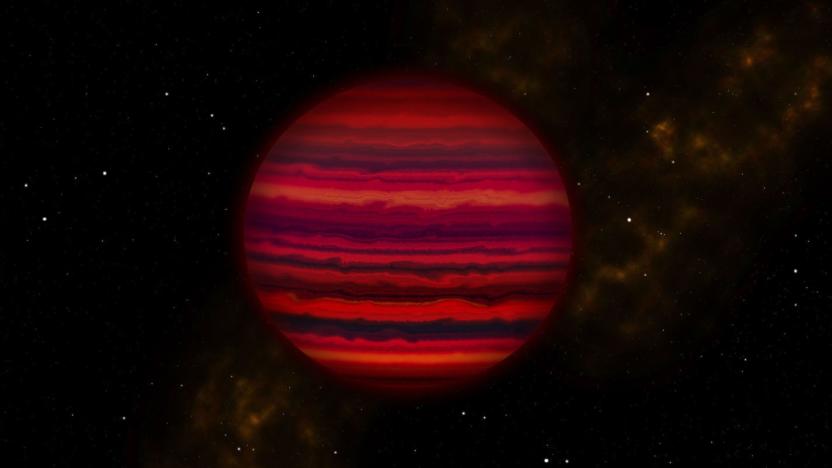browndwarf
Latest

Citizen scientists find a failed star in the Sun's neighborhood
Citizen scientists may not have the time and equipment of their pro counterparts, but their dedication can sometimes lead to discoveries that would otherwise be impractical. Case in point: a NASA-backed citizen science initiative, Backyard Worlds: Planet 9, has found a brown dwarf (effectively, a failed star) relatively close to the Sun at 110 light years away. Rosa Castro and three other amateur observers combed through a "flipbook" of images from the Wide-field Infrared Survey Explorer to spot the dwarf as it traversed through space. The discovery is notable for a few reasons, and not just because dedicated astronomers didn't catch it.

An excess of 'failed' stars is a bad sign for alien life
We know for a fact that life can exist on planets that orbit yellow dwarf stars like our sun and are optimistic about the chances for smaller red dwarf systems like Trappist-1. When it comes to their awkward brown dwarf cousins, however, astronomers don't think life is possible -- they're too small and cool to support it. So it's a bit of a bummer that astronomers have discovered as many as 100 billion brown dwarfs in our galaxy, out of a maximum 400 billion stars in total.

NASA is crowdsourcing the search for exoplanets
To those of you who dream of going to space: Sorry, but that may never happen. However, NASA is once again counting on the public for help understanding what's beyond our world. All we have to do is look at some photos online. Today marks the launch of Backyard Worlds: Planet 9, a project that relies on everyday people to help scientists identify objects near our solar system. These celestial bodies appear to move across the sky, but computers have a hard time finding things like brown dwarfs and planets in the noisy images. This means manually searching the photos is the most effective method to get the job done.

Scientists find the first water clouds beyond the Solar System
At last, astronomers have found evidence of watery clouds beyond our home star... only they're not hovering around a planet, like you might expect. UC Santa Cruz-led researchers have discovered signs of water vapor clouds around WISE 0855, a brown dwarf (that is, gas and dust that failed to become a star) a relatively close 7.2 light years away. The team had to use tricky infrared spectrum analysis to spot signs of water absorption around the dwarf, which is so cold and faint (-10F) that visible light and near-infrared studies wouldn't work.

Scientists observe the largest solar system ever discovered
Astronomers have discovered that a huge planet and star 104 light years from Earth form the largest solar system ever seen. The planet, dubbed 2MASS J2126-8140, and its red dwarf star are a full 7,000 astronomical units (AUs) apart, or a trillion miles (an AU is the distance between the Earth and the sun). Researchers previously thought the planet was "rogue," roaming the galaxy alone. In fact, they're so distant that if the star exploded, citizens of planet 2MASS wouldn't know about it for a full 62 days. Given its bizarre characteristics, however, it's unlikely that anyone lives there.

Astronomers spot a star with a Jupiter-like storm
Unfathomably large storms aren't reserved solely for gas giants like Jupiter... they can exist on stars, too. Astronomers using the Kepler and Spitzer space telescopes have discovered a giant storm on W1906+40, a brown dwarf cool enough ("just" 3,500F) to have clouds full of minerals. It's so large that you could fit thee Earths within its volume, and it's been raging for years. In fact, it wasn't until scientists used Spitzer's infrared detection that they even realized that it wasn't just a massive sunspot.


